The Dog-headed Martyr: The Most Mysterious Saint in Christianity
Categories: Culture | Europe | World
By Pictolic https://pictolic.com/article/the-dog-headed-martyr-the-most-mysterious-saint-in-christianity.htmlAfter seeing the icon with St. Christopher for the first time, many people begin to be indignant, believing that they see a fake in front of them, designed to offend their faith. But this is not so — Christopher was actually depicted with a dog's head for many centuries, and only in the XVIII century the Orthodox Church abandoned such a tradition. Where did this martyr come from in the pantheon of Christian saints and why does he look so unusual?
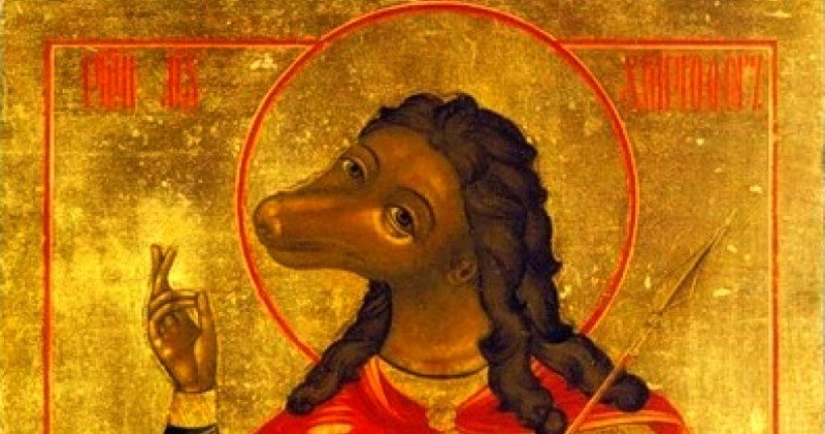
Today, it is customary to depict St. Christopher in the form of a handsome old man with a full beard, holding the Christ child on his hands or shoulders. But this was not always the case, because traditionally this great martyr revered by Christians is usually depicted with a dog's head. The first image of the saint was found on amphorae of the V-VII century AD on the territory of modern Macedonia, which approximately corresponds to the beginning of his veneration by Christians.

In May 1722, the Holy Synod forbade depicting the saint "with the head of the song", as this, according to the leaders of the Orthodox Church, "is contrary to nature, history and the truth itself." After that, Christopher the kinocephalus was everywhere rewritten on iconostases or simply destroyed. The dog-headed image of the saint has been preserved only on frescoes in Old Believer churches and on some historical artifacts in museums.
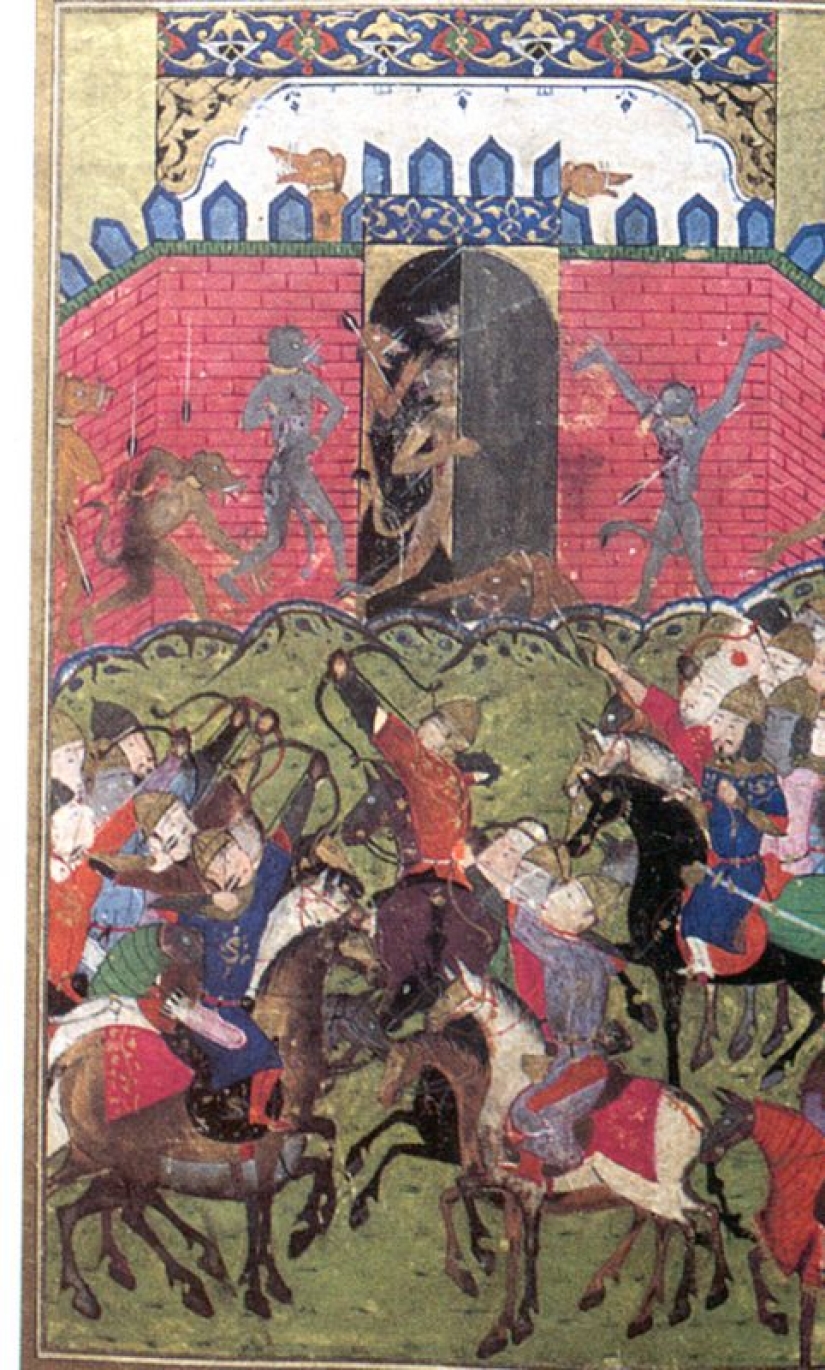
The Kinocephalians, or pesigolovtsy, were first described as a people by ancient historians and travelers. Mentions of them can be found in the works of Herodotus, Pliny the Elder, Hesiod. Historians describe them in different ways, but everyone is united in the fact that this people, unlike ordinary people, lives on the border of the Oikumene known to ancient people - in Scythia, India, Ethiopia or Libya.
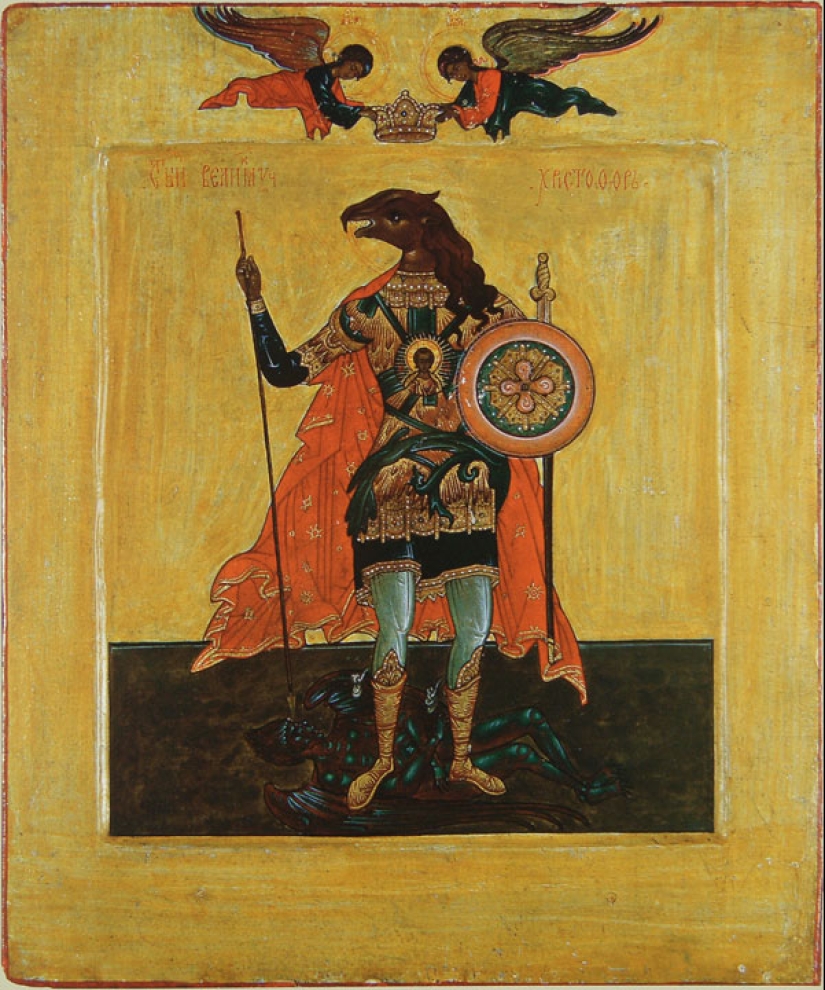
Among Christian authors, Andrei Pervozvanny told about the pesigolovtsy for the first time. The Apostle met an unusual people during his missionary wanderings somewhere in the area of the modern border of Iran and Pakistan. It is obvious that Christopher came from the outskirts of the ancient world, since in the Orthodox tradition it is believed that he was captured by the Romans in the Battle of Marmarica, in Libya.
The stranger who was captured by the legionnaires was named Reprobus or Reprev, which meant "outcast". He had a gigantic stature, incredible strength and such a ferocious appearance that the Roman emperor Decius Trajan, at the sight of him, jumped up from the throne in panic. The dog's head, powerful physique and thunderous voice made an indelible impression even on the most courageous warriors.

We perfectly understand that the creature described in the ancient church books could not exist in reality and its appearance can only be explained by the imagination of the authors, an incorrect translation or a physical deformity, congenital or acquired. Some Constantinople sources indicate that it is not worth taking Christopher's description at face value. The monks who were the authors of these books believed that dog-headedness is designed to focus attention on the extreme ferocity and inhumanity of a captured foreigner.
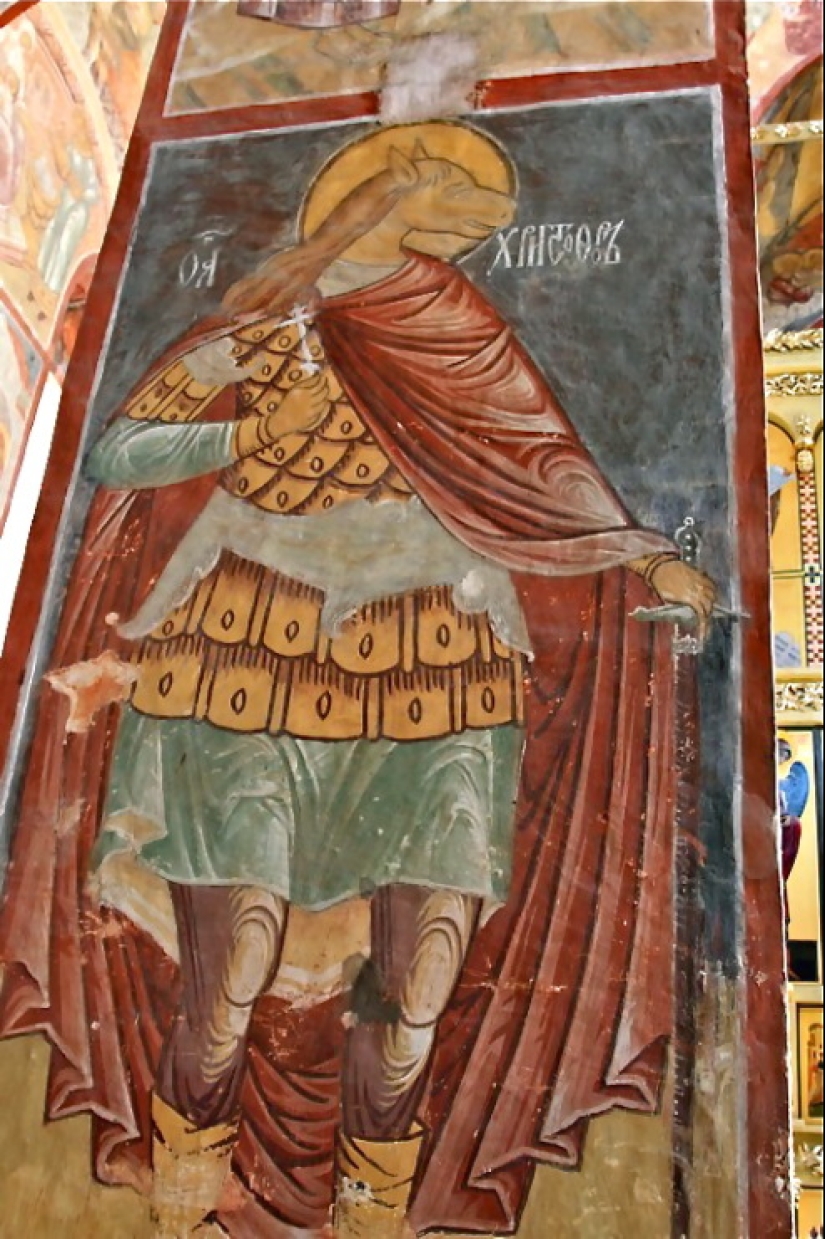
As another argument, we can cite the notes of the medieval traveler Marco Polo, who during his wanderings met a tribe of cynocephalians in Central Asia. They were ordinary people, but according to custom, they cut their mouths so that it looked like a huge mouth and sharpened their teeth. In addition, the cynocephals bandaged the skulls of infants so that they deformed and acquired an elongated shape. Polo claims that these people looked creepy and reminded him of mastiffs.
But back to the giant Reprev. How did a pagan with a dog's head become one of the most revered saints in Europe? One of the versions says that one day, crossing the desert lands, Reprev saw a stormy stream, at which a little boy was standing. The child asked the mighty traveler to carry him across the river and he agreed.
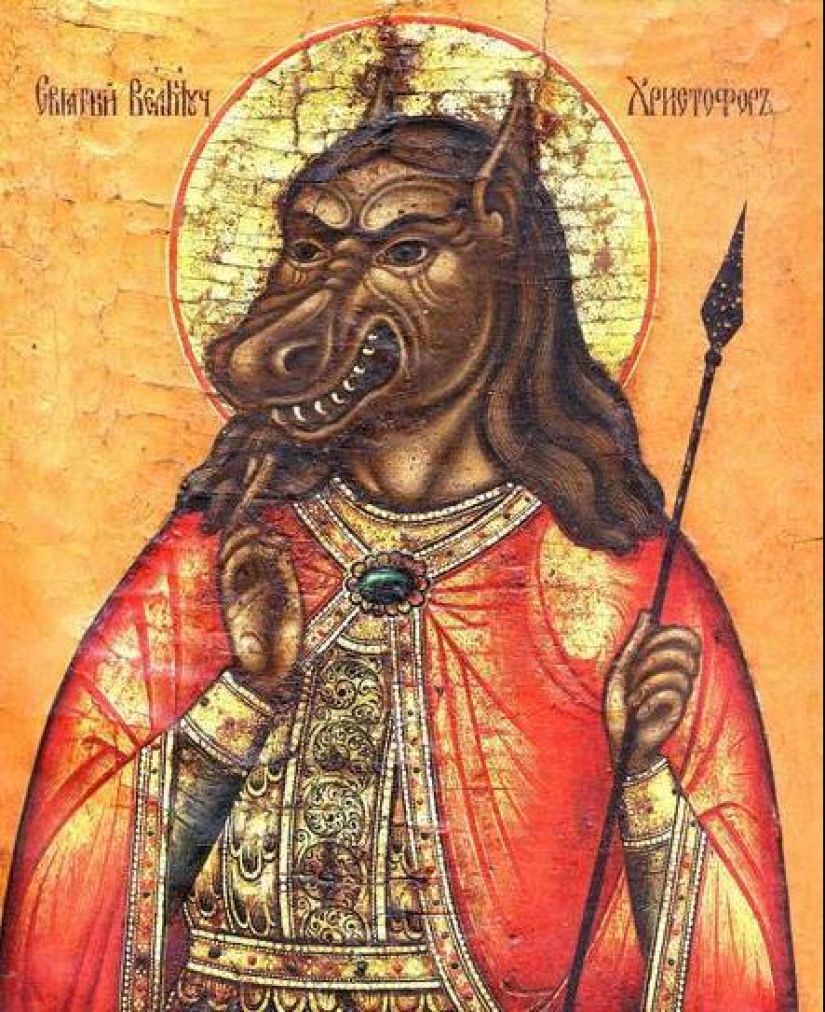
But as soon as kinocephalus stepped into the water with the boy on his shoulders, he felt an incredible heaviness and began to fear that he would fall under his burden. Seeing Reprev's doubts, the child told him to boldly go on, since nothing bad could happen. The boy informed the soldier that he was the Christ and was so heavy because he carried all the sorrows and hardships of people.
On the other bank, Jesus baptized Reprev and gave him the name Christopher, that is, "the bearer of Christ." That is why the saint is most often depicted with a baby, and he is most revered by those who go on a long dangerous journey or undertake a very difficult task.

After his baptism, Christopher returned to Rome, where he continued to serve the emperor. But at the same time, the warrior actively preached Christianity and converted many to the faith. Having heard about this, Decius Trajan ordered harlots to be sent to a Christian to seduce him, but Christopher failed and convinced them to believe in Jesus.
The emperor did not want to lose one of the best warriors, but he had to resort to the most extreme measures. The warrior-preacher was seized and thrown into a red-hot copper box. As expected, the fire did not harm Christopher, so the Romans had to cut off his head. After that, the martyr died, and his body was taken by one of the disciples — Peter of Attalia and taken to Alexandria in Egypt.
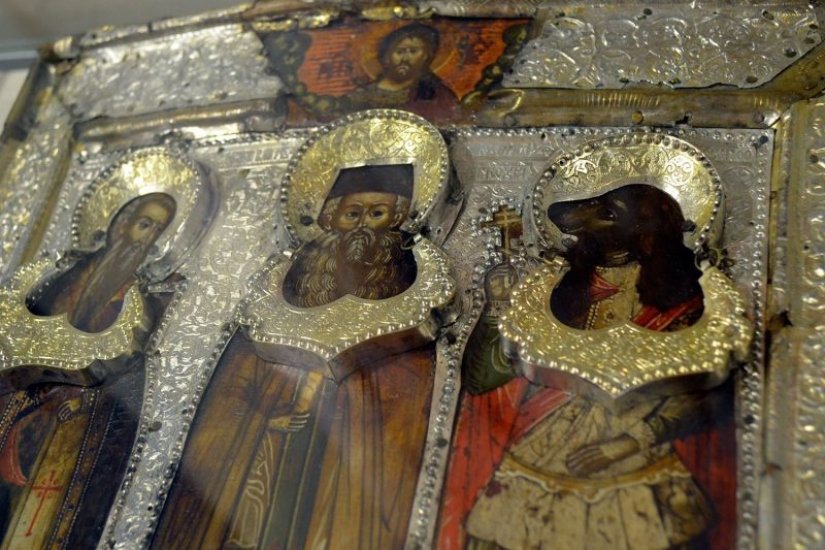
Of course, it is now impossible to check whether the legend of the dog-headed martyr corresponds to the truth. Archdeacon Pavel of Aleppo in the XVII century claimed that he had the good fortune to venerate the relics of St. Christopher in Moscow, in the Annunciation Cathedral. Paul described the dog's head of the saint, which was kissed during the ritual of "washing the relics".
It is difficult to say how the relics of the saint got to Moscow and what kind of skull the archdeacon specifically described. The relics of Christopher were seen in Constantinople, where they came from the city of Rab, in Croatia. There is a legend that the skull of the saint helped the inhabitants of the fortress to repel a naval attack by the Normans in 1075. The relics were carried out on the city walls at the moment when the enemy fleet entered the harbor. Immediately, a hurricane-force wind rose, which carried the ships back to the open sea.
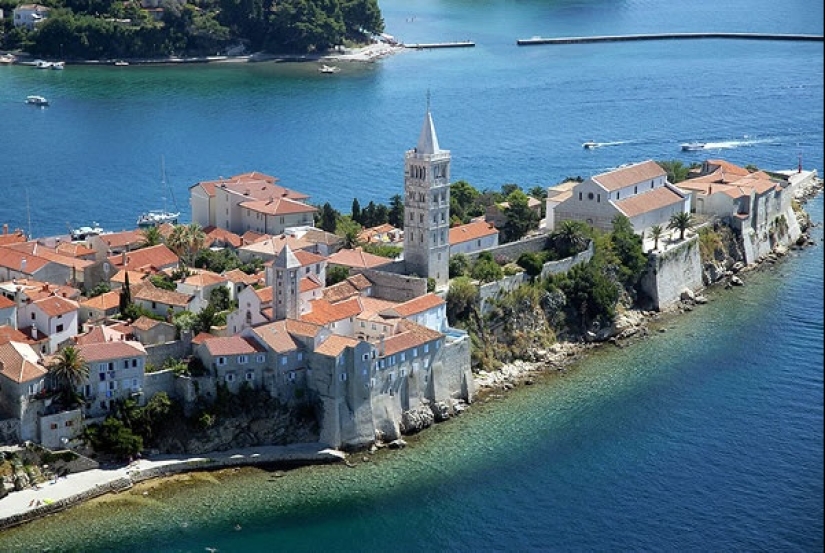
It is believed that the skull of St. Christopher was returned to Croatia, where the relics first performed a miracle and he found peace in the reliquary of the Church of St. Justina in the city of Rab, where they are to this day. One of the bastions of the slave fortress, the one on which the relics were located during the Viking attack, bears the name of this martyr.
It is interesting, but the dog-headedness of the saint is characteristic only of Orthodoxy. In Catholicism, this option has always been viewed with skepticism and even as blasphemy. Erasmus of Rotterdam in his work "Praise of Stupidity" quite sharply criticizes both the saint himself and his admirers. The Catholic Church doubts the existence of this saint and has even demoted him to martyrs of local significance. The saint's Memorial Day was excluded from the Catholic calendar in 1969, but the martyr himself was not decanonized, leaving him a saint.
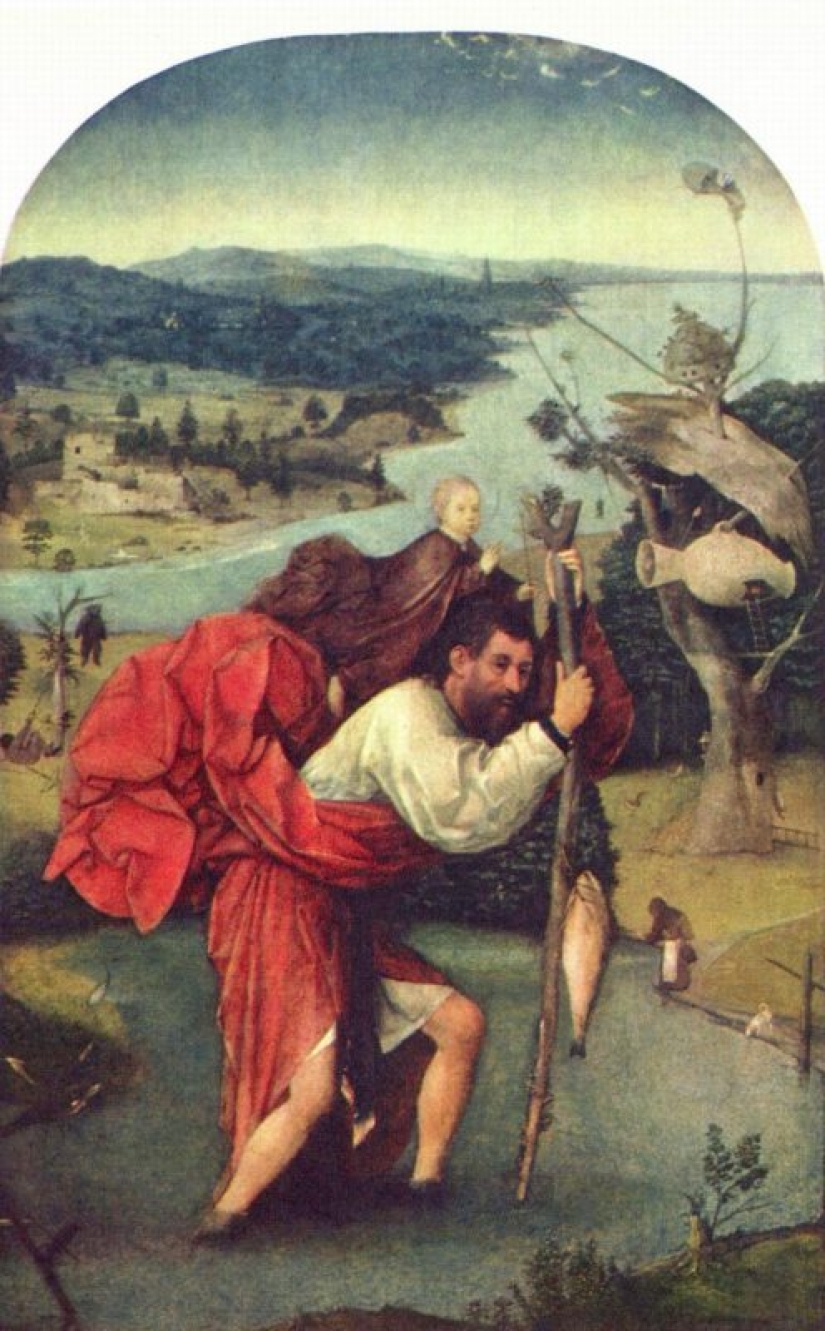
In the Western tradition, Christopher was depicted as a giant with a child on his shoulders — this is how he appears to the audience on the canvases of Hieronymus Bosch, engravings by Durer and Cranach. Despite the attitude of the official Catholic Church, St. Christopher is very popular in Europe, especially in Spain and Lithuania. Spaniards pray to Christopher to protect their children from infectious diseases, and Lithuanians consider the patron saint of their capital, the city of Vilnius.
Finally, it is worth adding that in Christianity there are three more saints with the same name: Christopher the Roman, Christopher of Nicomedia and Christopher of Koryazhem.
Recent articles

Sometimes you see a tattoo on a person and think: "Why did he do it at all?". A familiar feeling? If you have never experienced it, ...

Taxi ride like a lottery — you never know if you will pull the winning ticket. Even the official services like Uber does not ...

Finnish photographer Juha Tanhua has shot an unusual series of "space photos". Astrophotographic images of stars, galaxies and ...